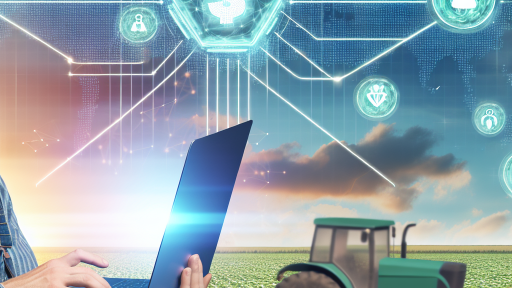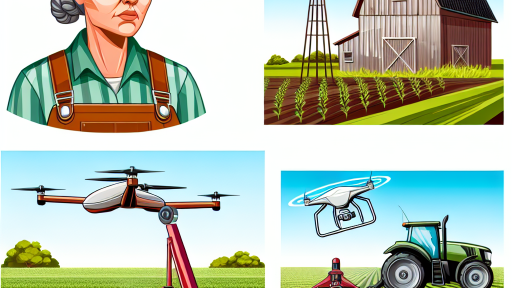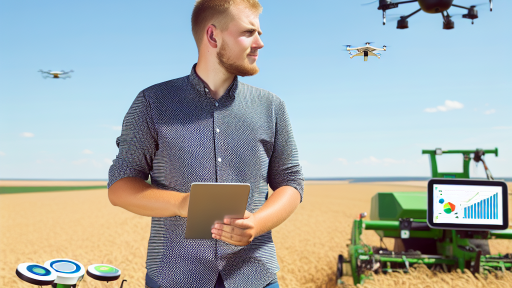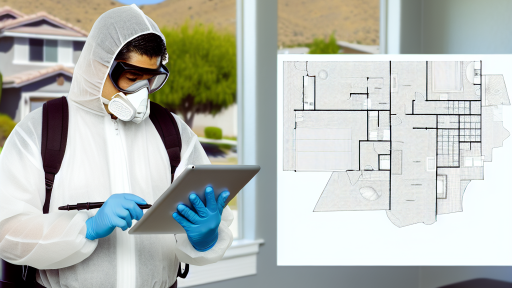Introduction to Drone Technology in Agriculture
Drones are transforming agricultural practices around the world.
They provide farmers with innovative tools for better crop monitoring.
Farmers use drones to collect data efficiently and accurately.
This technology enhances decision-making capabilities in farming.
Additionally, drones reduce the time spent on manual inspections.
Now, let’s explore how drones benefit crop monitoring.
Advantages of Drones for Crop Monitoring
Drones offer high-resolution aerial imagery of fields.
This imagery helps in identifying crop health issues early.
Farmers can track irrigation patterns and soil conditions using drones.
Moreover, drones can cover vast areas in a short period.
This capability saves labor and fuel costs significantly.
Real-Time Data Collection
With drones, farmers access real-time data about their crops.
This information allows for immediate adjustments to farming practices.
For example, if a section of crops is underperforming, farmers can act swiftly.
Such responsiveness increases overall crop yields.
Transform Your Agribusiness
Unlock your farm's potential with expert advice tailored to your needs. Get actionable steps that drive real results.
Get StartedIntegration with Agricultural Software
Drones can integrate seamlessly with farm management software.
This integration allows for effective data analysis and visualization.
As a result, farmers can make informed decisions based on concrete data.
Many companies now offer software specifically designed for drone data.
Examples include precision agriculture platforms that enhance workflow.
Environmental Impact and Sustainability
Drones contribute to sustainable agricultural practices.
They help minimize pesticide use by targeting specific areas.
This targeted application reduces chemical runoff into water supplies.
Consequently, drones support eco-friendly farming methods.
Benefits of Using Drones for Crop Monitoring
Improved Data Collection
Drones facilitate the rapid collection of crop data.
They cover large areas more efficiently than traditional methods.
This speed allows farmers to make timely decisions.
Moreover, drones provide high-resolution aerial imagery.
This imagery enhances the analysis of crop health.
Precision Agriculture
Using drones enables precision agriculture techniques.
Farmers can monitor specific areas needing attention.
This leads to targeted interventions for better results.
For example, they can spot irregularities in irrigation.
Consequently, resources can be allocated more effectively.
Cost Efficiency
Drones can significantly reduce monitoring costs over time.
They eliminate the need for extensive manpower and equipment.
Additionally, they minimize wastage of fertilizers and pesticides.
Farmers can apply products only where necessary.
This method enhances both economic and environmental sustainability.
Showcase Your Farming Business
Publish your professional farming services profile on our blog for a one-time fee of $200 and reach a dedicated audience of farmers and agribusiness owners.
Publish Your ProfileReal-Time Monitoring
Real-time data is crucial for effective crop management.
Drones allow farmers to track crop conditions continuously.
This feature provides immediate feedback for necessary actions.
As a result, issues can be addressed before they escalate.
Consequently, this approach helps maintain healthy crops.
Enhanced Yield Prediction
Drones improve crop yield predictions through data analysis.
They collect information on crop maturity and health.
Farmers can assess trends over time with this data.
Better predictions lead to optimized harvesting schedules.
Ultimately, this improves overall farm profitability.
Types of Drones Used in Agriculture
Fixed-Wing Drones
Fixed-wing drones are ideal for covering large areas quickly.
These drones can fly longer distances compared to other types.
They are efficient for mapping and surveying agricultural land.
Farmers often use them for aerial imaging and analysis.
Multirotor Drones
Multirotor drones offer greater maneuverability in tight spaces.
They are perfect for detailed inspections of crops.
Additionally, they can hover over specific areas for closer observation.
Farmers frequently use them for crop health assessment.
Hybrid Drones
Hybrid drones combine features from both fixed-wing and multirotor types.
This versatility allows them to take off and land vertically.
Consequently, they can cover vast fields while maintaining flexibility.
Farmers find these drones useful for various agricultural tasks.
Submersible Drones
Submersible drones open new possibilities for aquatic farming.
These drones monitor water quality and inspect submerged crops.
Additionally, they assist with fish farming operations.
Farmers utilize them to manage and enhance aquatic environments.
Payload Capacity Considerations
Drones with higher payload capacities can carry more equipment.
This includes sensors, cameras, or pesticide spraying devices.
Farmers choose the right drone based on their specific needs.
In this way, they maximize the efficiency of their operations.
Find Out More: The Key Benefits Of Agri-Fintech Solutions For Small Scale Farmers
How Drones Collect Data for Crop Health Analysis
Data Collection Techniques
Drones utilize various sensors for data collection.
These sensors can capture images in different spectrums.
Visible light cameras provide standard imagery for broad assessments.
Near-infrared cameras highlight plant health effectively.
Multispectral sensors gather data across multiple wavelengths.
This variety helps in accurate crop analysis.
Flight Patterns and Coverage
Drones fly predetermined flight paths over fields.
They ensure comprehensive coverage of the crop area.
Automated flight planning maximizes efficiency during data collection.
Showcase Your Farming Business
Publish your professional farming services profile on our blog for a one-time fee of $200 and reach a dedicated audience of farmers and agribusiness owners.
Publish Your ProfileDrone altitude adjustments improve image resolution and detail.
These factors contribute to a complete health assessment.
Real-Time Data Processing
Drones transmit data to software immediately after collection.
This allows farmers to review the data on-site.
Real-time processing minimizes response times for crop issues.
Farmers can quickly make informed decisions based on insights.
Timely intervention can enhance crop yields significantly.
Integration with GIS and AI Technologies
Drones can integrate with Geographic Information Systems.
GIS enhances spatial analysis of crop health data.
Artificial Intelligence tools analyze large datasets efficiently.
This analysis provides predictive insights for future crop management.
Farmers gain a technological edge by employing these methods.
Delve into the Subject: Enhancing Farm Productivity Through Agri-Fintech Innovations
Integration of Drone Data with Agricultural Management Systems
Leveraging Drone Technology
Drones provide valuable data for agricultural management systems.
Farmers can leverage high-resolution imagery to gain insights into crop health.
Additionally, drones offer real-time monitoring capabilities.
This technology enhances productivity and efficiency in farming practices.
Moreover, drone data can improve decision-making processes.
Data Collection and Analysis
Using drones, farmers can collect vast amounts of data quickly.
These data sets include crop growth patterns and soil health metrics.
Advanced algorithms analyze this data for actionable insights.
Integrating these insights into management systems optimizes farming operations.
Farmers can adjust their strategies based on precise drone data.
Integration with Existing Systems
Drones can easily integrate with various agricultural management systems.
This compatibility allows seamless data transfer and analysis.
Farmers can merge drone data with other sources for comprehensive insights.
For instance, they can compare drone imagery with weather data.
This holistic view supports better risk management in agriculture.
Benefits of Integration
Integrating drone data enhances crop monitoring efficiency.
Farmers can identify problem areas before they escalate.
This proactive approach reduces crop loss and increases yields.
Furthermore, it leads to more sustainable farming practices.
Ultimately, farmers save time and resources through effective management.
Case Studies and Real-World Applications
Many companies successfully integrate drone data into their operations.
For example, GreenField Farms utilizes drones for crop monitoring.
This practice has significantly improved their yield over recent years.
Another case involves River Valley Agriculture, which uses drone data to manage irrigation.
By adopting this technology, they reduced water usage and increased efficiency.
Uncover the Details: How Sensor Technology Enhances Crop Disease Monitoring On Farms
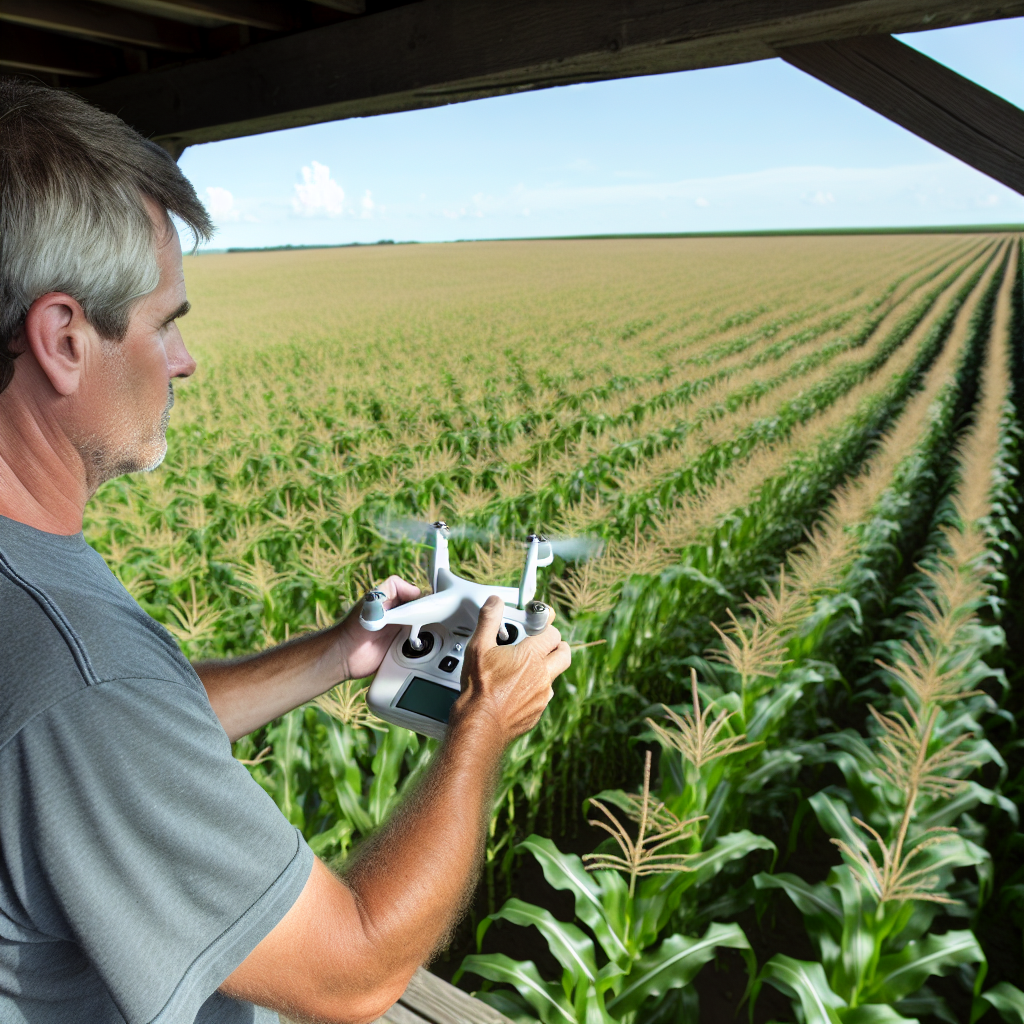
Case Studies: Successful Implementation of Drones in Crop Management
Innovative Solutions at Green Valley Farms
Green Valley Farms adopted drones in their crop monitoring strategy.
Showcase Your Farming Business
Publish your professional farming services profile on our blog for a one-time fee of $200 and reach a dedicated audience of farmers and agribusiness owners.
Publish Your ProfileThis decision significantly improved their efficiency and yield accuracy.
Farmers used drones to capture high-resolution images of their fields.
By analyzing these images, they identified pest infestations early.
This proactive step reduced crop damage and increased productivity.
Additionally, drones provided precise data on soil health and moisture levels.
As a result, farmers optimized irrigation schedules effectively.
Green Valley Farms reported a 20% increase in overall crop yield.
Precision Agriculture Solutions at LandTech Innovations
LandTech Innovations incorporated drone technology in its operations.
The company provides aerial imagery for crop management.
Drones equipped with multispectral cameras deliver valuable insights.
This technology helps identify areas needing specific nutrients.
By applying fertilizers accurately, farmers save resources and costs.
Adopting this technology resulted in a 30% reduction in input waste.
Moreover, it enhanced environmental sustainability in the farming process.
Case Study: Family Farm Success
The Smith Family Farm utilized drones for real-time monitoring.
Drones helped them cover extensive fields quickly and efficiently.
This capability allowed for prompt identification of crop health issues.
Farmers addressed these issues before they escalated into larger problems.
Consequently, the farm noticed a remarkable increase in profitability.
Drones also improved the management of crop rotation schedules.
By analyzing data, the farmers made informed planting decisions.
Research and Development Initiatives
Several universities are conducting studies on drone usage in agriculture.
These studies focus on the integration of artificial intelligence in crop management.
Researchers analyze how drones can automate data collection.
This approach aims to minimize human error in crop assessments.
Participants report improved accuracy through data-driven practices.
Drones will likely play a significant role in the future of farming.
Gain More Insights: Integrating Renewable Energy into Large-Scale Farms
Challenges and Limitations of Drone Usage in Agriculture
Regulatory Hurdles
Drones face significant regulatory challenges around the world.
Poorly defined regulations can hinder the adoption of drone technology.
Farmers often need permits to operate drones commercially.
Additionally, regulations may restrict flight altitude and no-fly zones.
Technical Limitations
The technology behind drones continues to evolve.
Yet, many drones face limitations in battery life and range.
Farmers might experience interruptions during long monitoring sessions.
Moreover, adverse weather conditions can impact drone performance.
Data Management Issues
Data collection from drones generates large volumes of information.
Farmers may struggle to analyze this data efficiently.
Without proper tools, insights can remain untapped.
Additionally, data security remains a concern for many users.
Showcase Your Farming Business
Publish your professional farming services profile on our blog for a one-time fee of $200 and reach a dedicated audience of farmers and agribusiness owners.
Publish Your ProfileCost Factors
Investing in drone technology can be costly for farmers.
Initial purchase prices and maintenance costs can deter adoption.
Furthermore, additional expenses may arise from software and training.
Financial considerations significantly influence decision-making processes.
Skill Requirements
Operating drones requires specific knowledge and skills.
Farmers may need training to use drones effectively.
Furthermore, understanding data analytics is increasingly necessary.
The learning curve may discourage some potential users.
Future Trends in Drone Technology for Crop Monitoring
Advanced Sensor Integration
Drone technology will see enhanced sensor capabilities in the coming years.
New sensors will improve data accuracy and detail.
For instance, multispectral and thermal sensors will become standard.
They will enable better assessment of plant health and irrigation needs.
Consequently, farmers can make more informed decisions.
Increased Autonomy and AI Capabilities
Future drones are likely to incorporate advanced artificial intelligence.
This will enhance their ability to make autonomous decisions.
Moreover, AI will help in real-time data analysis.
As a result, drones can identify issues faster and more accurately.
Farmers will benefit from quicker response times to potential crop problems.
Improved Data Sharing and Collaboration
Upcoming drone systems will emphasize better data sharing features.
Farmers will be able to connect drones with farm management systems.
This integration will streamline data collection and analysis.
Moreover, collaborative platforms will allow farmers to share insights and strategies.
Thus, collective knowledge will enhance decision-making across regions.
Regulatory Developments and Safety Enhancements
As drone usage expands, regulatory frameworks will evolve.
Governments will create clearer guidelines for safe operation.
This will ensure more accountability among drone users.
Additionally, enhanced safety features will be integrated into drones.
For example, fail-safe mechanisms will prevent accidents and ensure reliability.
Sustainable Practices and Environmental Monitoring
Future drones will play a crucial role in promoting sustainability.
They will monitor environmental conditions and help reduce pesticide use.
Farmers can apply products more precisely thanks to drone technology.
Moreover, this will minimize the ecological impact of agriculture.
Consequently, drones will assist in meeting both productivity and sustainability goals.
Additional Resources
Using Drones in Agriculture and Natural Resources | NIFA
Agriculture’s technology future: How connectivity can yield new growth

